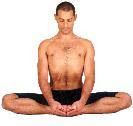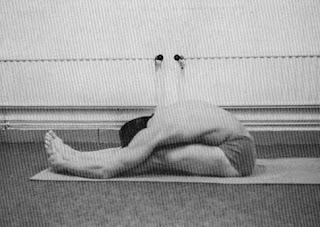Pranayama : The Serpent Power

Pranayama : The Serpent Power
Live As You Breathe; Take In and Let Go
Swami Rama used to say a person has one thought on inhalation and another on exhalation, so that the rate of breath determines the number of thoughts a person has. Greater number of thoughts (a faster breathing rate) decreases concentration because there are so many thoughts going on.
The breath, body and mind are so closely linked, a change in one brings about a change in the other two. By developing control of your breath in certain ways, you can bring beneficial changes to your body and mind.
Pranayama acts as a key, it opens the mind, freeing the nervous system of its ordinary patterns and habits. By breathing from the upper third of the respiratory system, pranayama can move blocked pathways to the brain and the nervous system, creating new
patterns, roadways to the superhighway of the superconscious. Pranayama revitalizes the body, steadies the emotions, and creates great clarity of mind.
Maintain the bandhas during pranayama. Place the mind in the breath. Pranayama, like asana practice, is progressive. You build upon what you’ve already done.
Practice Pranayama
Sit in siddhasana or padmasana. Begin with exhale, retention. We use the example of a water pot. Before you fill it up, you want to bake it until it’s strong, to seal it, especially the bottom of the pot so that it doesn’t leak. This corresponds to the exhale retention, you want to make sure that your pot will hold water before you fill it up. Connect with mula bandha, lifting the pelvic floor and uddiyana bandha, drawing the navel inward and toward the spine.
At the top of the pot, you’ll want to have a stopper, so that the water doesn’t spill out. The inhale retention with jalandhara bandha (throat lock) is the stopper. You want to contain and build the prana, life force, with the bandhas, the seals that prevent leakage.
With pranayama we are putting the mind in the breath. The idea is to bring the breath up through the sushumna nadi. The exhalation creates stability, grounding. It is the descent of the spirit from the subtle moving into dense movement of energy and down into the perineum. So you’re right in the location for the muladara chakra. If you can learn to follow the movement downward, then you’re there. Same with upward.
Opening on the inhale, apana downward. Anchoring on the exhale, prana upward
Try to make the period of retention as comfortable as possible. Connect with the base of the spine, creating a straight line from the top of the head to the base of the spine. At first the exhale hold feels very unnatural. You may feel a sense of panic or fear, the emptiness of breath versus the fullness of breath. If you don’t do the bandhas, you won’t be able to do the exhale retention comfortably.
Hold the retention as long as you can comfortably, start small and work up from there. A good indicator of capacity is the quality of the subsequent breath. If the inhale is a huge sucking, fast breath, then the exhale hold was too long. You don’t want the breath to have a grasping quality. Pranayama should be soothing for the system.



Comments